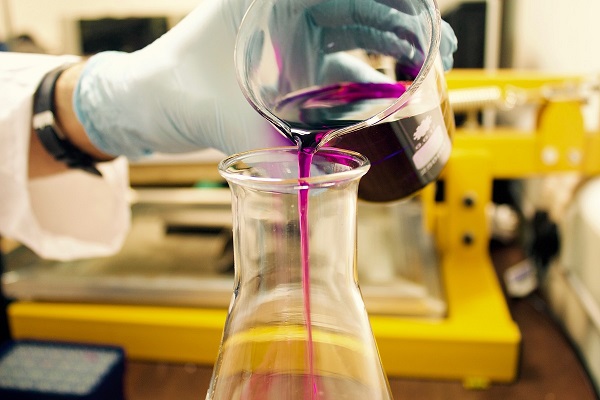Haemagglutinin (HA), the crown-like protein adorning the influenza virus, is far from just a glamorous accessory. It’s the master key that unlocks the door to our cells, orchestrating the viral invasion with chilling precision. But like any captivating mystery, HA’s secrets lie beneath its sparkling surface, waiting to be unraveled. So, let’s delve deeper, peering through the keyhole with our top 10 Q&A, expanded to unveil the intricate dance between this viral protein and our immune system:
- How does HA work?
Imagine HA as a two-pronged weapon. Its head domain, adorned with sugar-grabbing pockets, acts like a key, seeking out specific sugar patterns (sialic acids) on the surface of host cells. Once it finds the perfect fit, the stalk domain, a coiled spring hidden beneath the crown, springs into action. Like a trapdoor flung open, it forces the viral membrane to merge with the host cell membrane, granting the virus entry and unleashing its infectious payload.
- Why are there so many HA types?
HA is a shapeshifter extraordinaire, existing in 18 distinct subtypes (H1 to H18) and even more clades within each. Each subtype boasts a unique head domain structure, with slightly different pockets and preferences for sugar patterns. This is why one year’s influenza vaccine may not offer complete protection against the next. It’s like trying to open a dozen different locks with one key – some might fit, but others will remain stubbornly shut.
- How does HA “recognize” the host cell?
Each HA subtype is like a picky eater, only targeting specific cell types. This selectivity depends on the shape of its sugar-grabbing pockets and the arrangement of sialic acids on the host cell surface. It’s a precise dance of molecular shapes, where only the perfect fit unlocks the door to infection.
- What happens after HA opens the gate?
Once HA binds to the host cell, it undergoes a dramatic transformation. Like a spring-loaded trapdoor flung open, the stalk domain changes its shape, pulling the viral and host membranes closer together. This creates a tiny fusion pore, a microscopic tunnel through which the virus’s genetic material can slip into the host cell, hijacking its machinery and turning it into a virus factory.
- Is HA the only target for our defenses?
While HA is a prime target for vaccines, it’s not the only player on the viral team. Other proteins, like neuraminidase, help the virus escape from infected cells and spread to others. But neutralizing HA is like blocking the front door – it prevents the initial invasion, even if other escape routes remain.
- How do vaccines outsmart HA?
Influenza vaccines are like clever mimics, carrying harmless copies of specific parts of the HA head domain. These copies train our immune system to recognize the real virus, generating antibodies that can bind to HA and prevent it from finding its sugar-keyhole on host cells. It’s like teaching our immune system to identify and disable the master key before it can unlock the door.
- Can HA be used for good?
Beyond fueling pandemics, HA’s ability to bind to specific sugars has opened doors to exciting applications. Researchers are exploring using HA as a delivery system, attaching it to gene-editing tools or other molecules and guiding them into specific cell types. It’s like repurposing the lockpick to unlock the potential for new therapies.
- How are scientists studying HA?
From intricate crystal structures that reveal the protein’s atomic details to high-powered microscopes that capture its dynamic movements, researchers are constantly unlocking HA’s secrets. Understanding its every twist and turn is crucial for developing better vaccines, antiviral drugs, and even universal therapies that could work against a wider range of influenza strains.
- Can HA mutations make the virus more dangerous?
Absolutely! The influenza virus is a master of disguise. Changes in the HA gene can alter its sugar-binding pockets, allowing it to infect new cell types or evade existing vaccines. This is why influenza outbreaks can emerge seemingly out of nowhere, and why continuous surveillance and vaccine adaptation are crucial to staying ahead of the curve.
- Is there hope for defeating HA once and for all?
The quest for a universal influenza vaccine is ongoing. Researchers are exploring targets beyond HA, focusing on conserved regions of the virus that are less prone to mutations.
Haemagglutinin, though small, holds the key to understanding and combating influenza. By unraveling its secrets, we inch closer to a future where this viral gatekeeper can no longer grant the unwelcome guests entry.
HA proteins at Creative BioMart
Creative BioMart provides recombinant HA proteins including different types and specific influenza virus, such as H1N1, H1N2, H1N3, H5N1, and virus like Influenza A, Influenza B, Vaccinia virus, etc. Featured products include:
Active Recombinant H1N1 (A/California/04/2009) HA Protein, His-tagged
Active Recombinant H5N1 (A/Indonesia/5/2005) HA Protein, His-tagged
Active Recombinant H7N7 (A/Netherlands/219/03) HA Protein, His-tagged
Active Recombinant H1N1 (A/California/07/2009) HA Protein, His-tagged
Active Recombinant H7N7 (A/chicken/Netherlands/1/03) HA Protein, His-tagged
…



